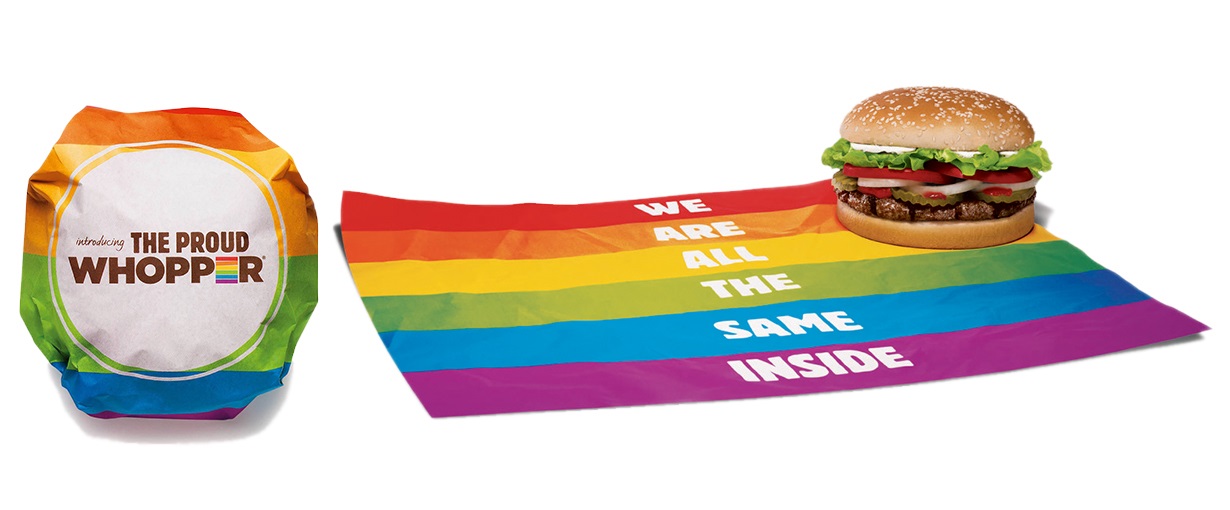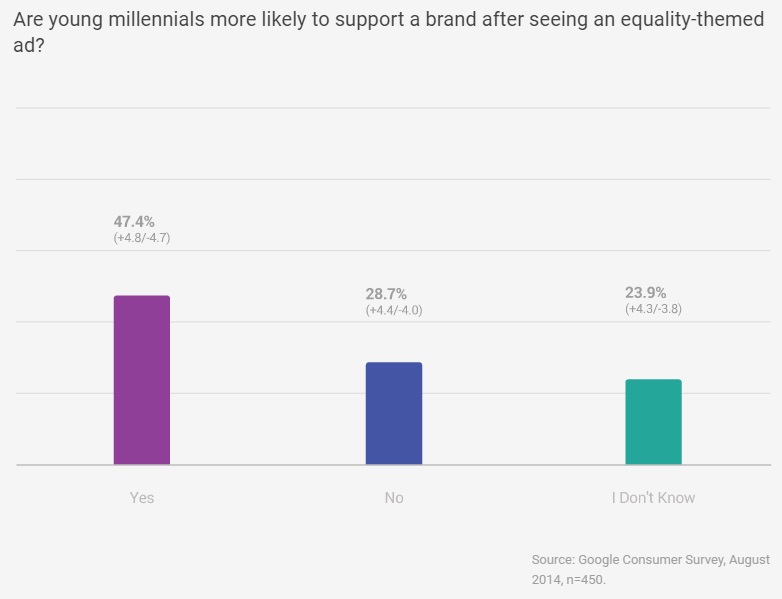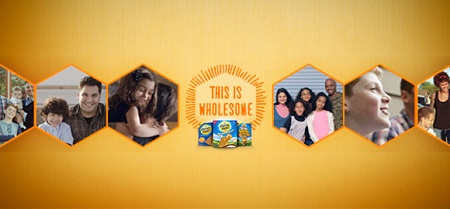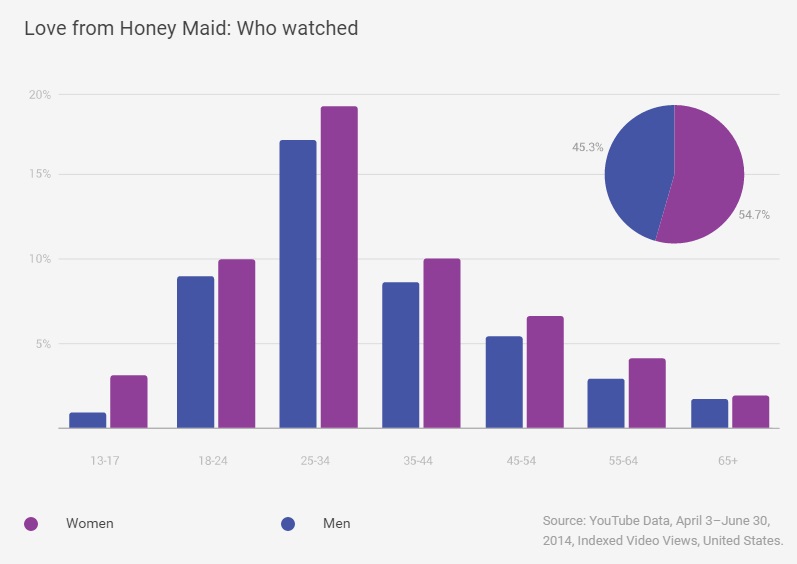Marketing entails more than just reaching the right person at the right time. Google and YouTube data looking at messages about diversity and equality for the LGBT community highlights some interesting results for Burger King and Honey Maid in the US.
As more and more attention is focused on equal rights for the LGBT community—specifically, marriage equality and diversity in the workplace—it's influencing how consumers make decisions.
This is especially true among the young; over 45% of consumers under 34 years old say they're more likely to do repeat business with an LGBT-friendly company, according to a Google Consumer Survey from August of 2014.
Of them, more than 54% also say they'd choose an equality-focused brand over a competitor.
Brands are responding with campaigns that espouse messages of inclusion, equality, and diversity. This "pride advertising" is having widespread impact online, according to YouTube and Google data. Here we take a closer look at two brands, Burger King and Honey Maid, that are leading the way.
Burger King's pride advertising speaks to equality
Last year, to coincide with the San Francisco Pride events, Burger KIng introduced new pride advertising in support of the LGBT community.
As part of BK's "Be Your Way" campaign, a spin on its 40-year-old "Have It Your Way" brand positioning, the Proud Whopper was introduced.

The Whopper was actually the same flame-grilled sandwich customers had enjoyed since 1957. So, what made it different? Its rainbow-colored wrapper held a special message for BK customers: "We are all the same inside."
Cameras rolled to capture reactions to the burger's release the day of the 2014 Pride Parade. Not surprisingly, BK's pride campaign, the Proud Whopper, and its unique messaging elicited some strong responses—poignant and powerful moments for the brand and its customers.
Reaction from its younger customers (the target audience was 18- to 24-year-olds ) was overwhelmingly positive, strong, and emotional. "Burger King restaurants have always been places to eat great-tasting food, let your guard down, and just be yourself without any judgment," Burger King's Fernando Machado said in AdWeek last year.
The video of the audience's reactions, which BK posted online, received 7M views across all social platforms. The YouTube video alone has received more than 5.3M to date.
The Proud Whopper ad reached 20% of the U.S. population, and young millennials over-indexed by 4.8X (Burger King data). The campaign was also praised by multiple media outlets, including The Wall Street Journal and Bloomberg. The impact of BK's message of inclusion was felt beyond the billion media impressions it received over earned media (Burger King data). Proceeds from the franchise's sales benefited the Burger King McLamore Foundation, which provides scholarships for LGBT high-school students.
Not only did Burger King take a stand on an important social issue, but it also delivered messaging that resonated with its target audience of 18- to 24-year-olds.

In fact, today's young millennials—47% of consumers under 24-years-old—are more likely to support a brand after seeing an equality-themed ad (compared with 30% of all age groups combined), as the Google Consumer Survey showed. And that's a win for everyone involved.
Honey Maid highlights diversity in its advertising
Honey Maid launched its This Is Wholesome campaign in 2014 with one simple notion in mind: While the typical American family has changed over time, it remains wholesome at its core. In celebrating the diversity of the modern family, Honey Maid saw an opportunity to connect with its customers while reminding them of its long history and dedication to inclusiveness.

The brand's target audience tuned in. The 30-second spot has over 8M views to date on YouTube. Using age and gender targeting, Honey Maid was able to see that 97% of the ad's video views came from 25- to 54-year-olds, according to YouTube data. Of those views, women were responsible for 98%.
While the overwhelming response to the video was positive, Honey Maid's message of inclusion didn't resonate with everyone. This was something the company expected, given that the diversity campaign featured all kinds of families, including one with same-sex parents. Indeed, there was some backlash—negative feedback on social media and over email as well as a boycott by one group—but Honey Maid was prepared to stand by its message.
Instead of a PR problem, Honey Maid saw an opportunity. Partnering with creative agency Droga5, it delivered a creative and ingenious response to the negativity: "Love." The video showed two artists using printouts of all the negative tweets and emails about the first spot to build the word "Love." It was simple and powerful, allowing Honey Maid to, again, show its commitment to the issues of diversity and equality, as well as its support for the LGBT community.

Honey Maid's message touched the hearts of people across demographics. Over 4M have watched "Love."YouTube data shows that views over the first 90 days were evenly split among men and women, and nearly a quarter of those who watched were millennials under age 24.

And that lovin' continued online. Searches for "Honey Maid" increased 10X during the last week in March, with sustained interest into May. In support of the campaign launch, Honey Maid drove penetration growth among millennial households +1 point, according to Gary P. Osifchin, the brand's senior marketing director.
Marketing objectives aside, Honey Maid's messaging about the wholesomeness of all families resonated with its customers. The brand stood up for diversity and equality and was rewarded not only with positivity among its fans but with their dollars as well. In the months following Honey Maid's diversity campaign, the company says that June/July sales for its products increased 7% YoY.

Conclusion: Pride advertising is a win for consumers and brands
Pride advertising isn't just about acknowledging and embracing the LGBT community. It's an opportunity for brands to speak their own truth and take a stand. And when they do, consumers, especially millennials, appreciate it and respond in kind.
They tune in and watch, participate in the conversation, and spend their dollars. Burger King and Honey Maid are just two of the brands making an impact by telling stories of diversity and equality in their advertising.